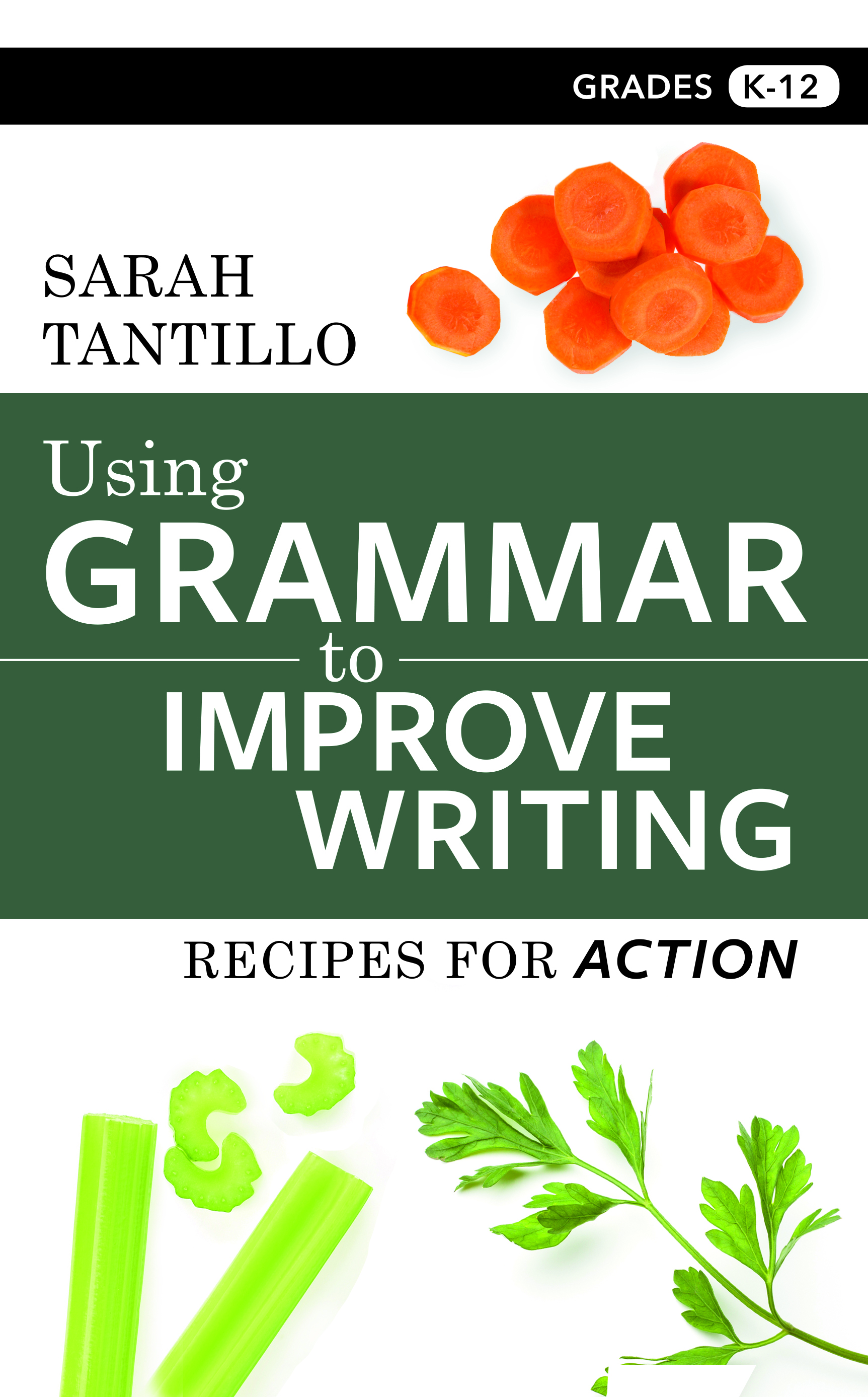 Why do we write? What are we trying to accomplish? What do students struggle with the most when they write? How can we best support students through the writing process? This section answers these questions and provides hands-on materials that will make your life easier.
Why do we write? What are we trying to accomplish? What do students struggle with the most when they write? How can we best support students through the writing process? This section answers these questions and provides hands-on materials that will make your life easier.For my thoughts on how to teach students to write clearly, see this MiddleWeb post, "What We Can Do When Kids Don't Write Clearly." And pick up a copy of Using Grammar to Improve Writing.
For some excellent nonfiction for students to imitate:
The Atlantic magazine put together "Slightly More Than 100 Exceptional Works of Journalism from 2015" (by Conor Friedersdorf).
Why do we write?
| 4 Purposes of Writing: IPIE |
|
|
|
|
What are we trying to accomplish?
| WHAT YOU DO | THE BASIC STRUCTURE | |
| NON-FICTION | You make an ARGUMENT. | Argument + Evidence That Proves It +Explanation |
| FICTION/NARRATIVE | You convey a LESSON, MESSAGE, or INSIGHT. | Theme + Story That Illustrates It |
Good writing conveys INSIGHTS. Check out the PUNCHY INSIGHTS POSTER for how to teach students to write insights.
What do students struggle with the most when they write?
1. They don’t understand the difference between ARGUMENT and EVIDENCE. We need to directly teach them the difference. See Argument vs. Evidence-Catcher in the Rye and Argument vs. Evidence-President Harding and Argument vs. Evidence-FDR (Thanks, Hans Winberg!) in the Download Zone. See also my explanation of the "Six Steps of Argument vs. Evidence" on the TLC "Argument vs. Evidence" page.
2. They don’t know how to write effective topic sentences. This problem stems from them not knowing what a good topic sentence looks like. They must be able to FIND topic sentences while reading before we can expect them to create their own. See the TLC "EFFECTIVE TOPIC SENTENCES" page. Handouts found in the Download Zone are as follows:
- How to Find the Topic Sentence
- EVALUATING TOPIC SENTENCES-I Know Why the Caged Bird Sings
- EVALUATING TOPIC SENTENCES-The Street
- Paragraph Responses-Sample, When I Was Puerto Rican
- PARAGRAPH RESPONSE Scoring Checklist
3. They don’t know how to provide effective evidence. Again, see EFFECTIVE TOPIC SENTENCES page and attendant handouts. For support on how to teach students to build "quote sandwiches" (context, evidence, and explanation) and quote lasagna, check out these TLC Blog posts on quote sandwiches. See also this TLC Blog post on selecting and explaining evidence HERE. You will also want to download Selecting and Explaining Evidence-Student Copy.
4. They don’t know how to craft an effective thesis or how to organize their writing once they have an argument to prove. See the following files in the Download Zone:
How to Infer Themes ORGANIZER, Brainstorming for Your Thesis, Developing Your Thesis Organizer, Unpacking Your Thesis Organizer, Unpacking Your Thesis Organizer MODEL, Unpacking Your Thesis Organizer MODEL-Grinch, Unpacking Your Thesis Organizer--SS MODEL, and Essay Outline Organizer. For a FREE download of the Unpacking Your Thesis Organizer MODEL (mentioned in my MiddleWeb blog post), click HERE.
5. They don't know how to connect ideas and explanations. Here are two useful Websites for teaching transitions:
http://www.virtualsalt.com/transits.htm
http://www.studygs.net/wrtstr6.htm
How can we best support students through the writing process? The Literacy Cookbook (book) addresses this question at length. This excerpt offers "Seven Simple Steps to Better Student Writing" (featured in MiddleWeb).
Check this out: Leaning into AI to Create More Meaningful, Rigorous Research Projects.
FOR TOOLS TO SUPPORT DIFFERENT GENRES OF WRITING, check out these key pages:
- History Writing: DBQ Essays
- Journal Writing
- Journalism Resources
- Literary Response Paper Guide
- Research Paper Guide
- Sociological Writing
- Test Prep
- Writers' Workshop
WONDERING HOW TO ASSESS WRITING? See the Writing Rubrics page.
WANT YOUR STUDENTS TO REFLECT ON THEIR WRITING? See this TLC Blog post "Preparing for End-of-Year Writing Reflections" and the End-of-Year Writing Reflections Sheet in the Download Zone.
IN THE DOWNLOAD ZONE for Writing 101:
- Argument vs. Evidence-Catcher in the Rye
- Argument vs. Evidence-President Harding
- Argument vs. Evidence-FDR
- How to Find the Topic Sentence
- EVALUATING TOPIC SENTENCES-I Know Why the Caged Bird Sings
- EVALUATING TOPIC SENTENCES-The Street
- Paragraph Responses-Sample, When I Was Puerto Rican
- PARAGRAPH RESPONSE Scoring Checklist
- Brainstorming for Your Thesis
- Developing Your Thesis Organizer
- Unpacking Your Thesis Organizer
- Unpacking Your Thesis Organizer MODEL (FOR A FREE DOWNLOAD, CLICK HERE.)
- Unpacking Your Thesis Organizer MODEL-Grinch
- Unpacking Your Thesis Organizer--SS MODEL
- Essay Outline Organizer
- ESSAY WRITING RUBRIC
- PUNCHY INSIGHTS POSTER
- How to Infer Themes ORGANIZER
- End-of-Year Writing Reflections Sheet
- Selecting and Explaining Evidence-Student Copy

